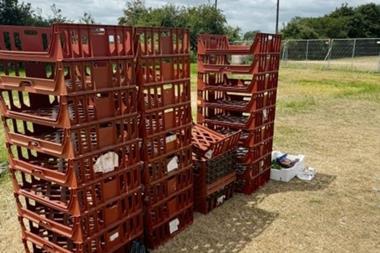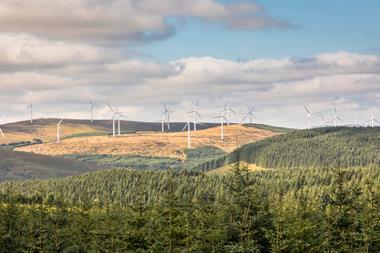Stanley Security UK fire product manager Michael Heasman GIFireE gives advice on best practice for the use of fire extinguishers in bakeries.
Fire extinguishers are an essential asset when it comes to proofing your premises as the first line of defence in a fire emergency. They can help control small outbreaks of fire quickly and, in more severe emergencies, can save lives.
Potential fire sources are widespread in a typical commercial bakery, due to the use of industrial equipment such as mixing machinery, proving, industrial ovens and cooling machinery, and from the product itself, including flour and oils, and even packaging. In addition, storage silos, baked items’ storage areas and surrounding offices represent potential sources of fire.
A professional risk assessment is required for individual premises and other fire measures must be in place, but generally we find three types of fires are most prevalent in bakeries: Class A fires involving solid materials, such as wood, paper, plastics or other materials of an organic nature; Class B fires involving flammable liquids, such as oils and lubricants; and fires involving live electrical apparatus.
To deal with the different fire types, a range of fire extinguishers are available, which are colour-coded. For bakeries, foam-based extinguishers (cream label) are ideal for Class A and B fires. The water element cools and the foam smothers the burning liquid. These should only be used where there is no electrical risk present, such as storage and packaging areas and for oil-based fires. Carbon dioxide (CO2) extinguishers (black label) are for electrical hazards and are mostly used in the vicinity of electrical equipment in the factory and are also required in office areas.
Fire extinguishers should be sited on line of escape routes, near to room exits and to danger points (but not too near) and, where possible, should be placed in groups forming fire points.
Individuals should not have to travel more than 30 metres for a Class A extinguisher or 10 metres for Class B. Extinguishers should be kept away from excess heat or cold and sited on purpose-built stands or site with carrying handle about a metre from the floor.
Make sure your fire extinguisher is serviced every 12 months or
after each use by a competent person. Fire extinguishers must be replaced at the end of their serviceable lives, which is 10 years for CO2 extinguishers and five to 15 years for others, depending on individual manufacturers.
Ultimately, employing a professional fire company to deal with your fire extinguisher needs is the sensible approach.














































No comments yet